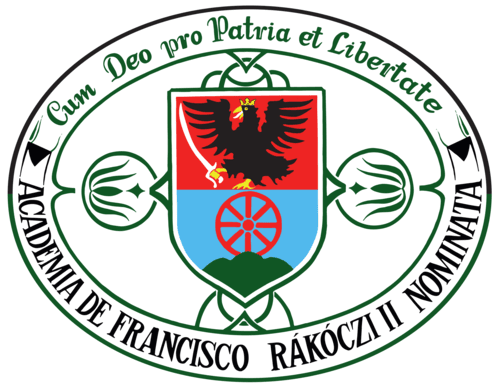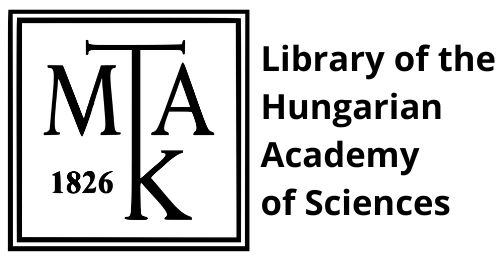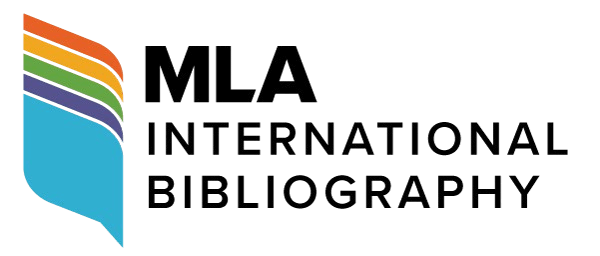Phonological and morphological features of Boyash language varieties in Eastern Slovakia
DOI:
https://doi.org/10.58423/2786-6726/2022-2-41-70Keywords:
Boyash, Romanian language, dialectology, ethnicity, linguistic fieldworkAbstract
The heterogeneous group of Boyash (or Bayash, Rudari) are small communities speaking different highly endangered conservative subvarieties of the Romanian language and dispersed throughout Central and Southeastern Europe. This paper first summarises historical research issues related to the Boyash communities in Eastern Slovakia and points out that the existing information is limited and rudimentary. A separate section is devoted to the categorisations of Boyash people. While these are crucial, they are of little use for linguistic inquiry. This is followed by a brief account of the migration history of the Slovakian Boyash. The paper focuses on preliminary linguistic data obtained through my dialectological fieldwork over the last decade. The audio material recorded in Slovakia is about 20 hours, the interviews were made between 2013 and 2018 recorded in 10 localities (Dolný Les, Oborín, Podhoroď, Podčičva, Čata, Kamenín, Malé Trakany, Čierna nad Tisou, Štúrovo, Most pri Bratislave) with 21 speakers (age 52-77). I present the system of Slovakian, Rusyn and Hungarian loanwords and differences between the Eastern Slovak Boyash varieties and standard Romanian, examine phonological and morphological features in detail and compare them with other language varieties spoken in Slovakia and Hungary. In Slovakia, the Boyash language varieties can only be learnt in local communities through oral communication as there is no institutional education. Literacy has not developed, only in the last 10-15 years have some people started to write phonetically using the Slovak alphabet. The Boyash language varieties of Eastern Slovakia are closely related to those of Transcarpathia, with many Slavic (Slovak, Ruthenian, possibly Ukrainian) and Hungarian elements enriching their language varieties. I point out that the characteristics of their linguistic system make them a clearly distinct language variety among the Boyash language varieties, with many variations, but also with a high degree of Old Romanian conservativism. The paper offers a brief description of the linguistic reality of an ethnic group that is still largely unknown.
References
Agócs, Attila, 2003. Sociálna identifikácia Bajášov na Slovensku [The Social Identification of the Boyash in Slovakia]. Etnologické rozpravy [Ethnological debates], 2: pp. 41–53 (In Slovakian).
Arató, Mátyás, 2013. A beás nyelvjáráskutatás előzetes tapasztalatai [Preliminary Experiences of Boyash Dialect Research]. In: Arató, Mátyás – Cserti Csapó, Tibor (eds.). Romológia “akkor és most” - romológusok második szakmai konferenciája [Romani Studies "Then and Now" – The Second Professional Conference of Romologists] (Konferenciakötet) (Gypsy Studies – Cigány tanulmányok 30.). Pécs: Pécsi Tudományegyetem, Bölcsészettudományi Kar Neveléstudományi Intézet, Romológia és Nevelésszociológia Tanszék – Romológiai Kutatóközpont – Wlislocki Henrik Szakkollégium, pp. 47–65 (In Hungarian).
Arató, Mátyás, 2015a. A dél-baranyai muncsán dialektus nyelvi rendszere (MA thesis) [Languge System of the Munćan dialect of Southern Baranya]. Pécs: Pécsi Tudományegyetem, Bölcsészettudományi Kar Neveléstudományi Intézet, Romológia és Nevelésszociológia Tanszék (In Hungarian).
Arató, Mátyás, 2015b. Beás nyelvjáráskutatás a Kárpát-medencében [Boyash Dialectological Research in the Carpathian Basin]. In: Benő, Attila – Fazakas, Emese – Zsemlyei, Borbála eds. Többnyelvűség és kommunikáció Kelet-Közép-Európában [Multilingualism and Communication in Central and Eastern Europe]. Cluj: Societatea, Erdélyi Múzeum-Egyesület, pp. 355–365 (In Hungarian).
Arató, Mátyás, 2015c: Dialektológiai terepmunka Kelet-Szlovákia beás közösségeiben [Dialectological Field Work in the Boyash Communities of Eastern Slovakia]. In: Cserti Csapó, Tibor ed. Horizontok és dialógusok. IV. Romológus konferencia [Horizons and Dialogues. 4th Conference on Romani Studies] – tanulmánykötet (Gypsy Studies – Cigány tanulmányok 35.). Pécs: Pécsi Tudományegyetem, Bölcsészettudományi Kar Neveléstudományi Intézet, Romológia és Nevelés-szociológia Tanszék – Romológiai Kutatóközpont, pp. 36–48 (In Hungarian).
Erdős, Kamill, 1958/1989. A magyarországi cigányság. [Roma in Hungary]. In: Vekerdi, József ed. Erdős Kamill cigánytanulmányai [Papers on Gypsy Studies by Kamill Erdős]. Békéscsaba: a Békés megyei Tanács V. B. Cigányügyi Koordinációs Bizottsága és a gyulai Erkel Ferenc Múzeum, pp. 42–56. [First published: Néprajzi Közlemények 3: pp. 152–173.) (In Hungarian).
Farkas, Jenő, 2007. Román nyelvtan [Romanian Grammar]. Budapest: Palamart Kiadó (In Hungarian).
Feischmidt, Margit, 2010. Megismerés és elismerés: elméletek, módszerek, politikák az etnicitás kutatásában [Knowledge and Acknowledgement: Theories, Methods, and Policies in Ethnicity Research]. In: Feischmidt, Margit ed. Etnicitás. Különbségteremtő társadalom [Ethnicity. A Society That Makes a Difference]. Budapest: Gondolat – MTA Kisebbségkutató Intézet, pp. 7–29 (In Hungarian).
Holicová, Viera 1977. O korytárskej výrobe neďaleko Piešťan (v obci Ratnovce) [About Trough making Near Piešťany (in the village of Ratnovce)]. Národopisné actuality [Ethnographic News], roč. 14.: pp. 79–81 (In Slovakian).
Kovalcsik, Katalin. 1988. A beás cigány népzene szisztematikus gyűjtésének első tapasztalatai [First Experiences of the Systematic Gathering of Boyash Gypsy Folk Music]. Zenetudományi dolgozatok 1988 [Papers in Musicology 1988]. Budapest: Magyar Tudományos Akadémia, Zenetudományi Intézet: pp. 215–231 (In Hungarian).
Kovalcsik, Katalin, 1993. A beás cigányok népzenei hagyományai [Folk Music Traditions of Boyash Gypsies]. In: Barna, Gábor ed. Cigány népi kultúra a Kárpát-medencében a 18–19. században [Gypsy Folk Culture in the Carpathian Basin in the 18th and 19th Centuries]. Salgótarján: Mikszáth Kiadó, pp. 231–239 (In Hungarian).
Kovalcsik, Katalin, 1994. Beások a felvidéken [The Boyash in Upper Hungary]. Amaro Drom [Our way], IV/11: p. 24 (In Hungarian).
Okrucký, Juraj, 1964. U majstrov sekery (o slovenských korytároch) [At The Ax Masters (about Slovak Trough Makers)] Umění a řemesla [Arts and Crafts], pp. 191–196 (In Czech).
N. Békefi, Margit, 2001. A Magyarországi Teknővájó Cigányok [Trough Maker Gypsies in Hungary]. Romológiai Kutatóintézet Közleményei 4. [Romani Studies Research Institute Bulletins 4.] Szekszárd: Romológiai Kutatóintézet (In Hungarian).
Pană Dindelegan, Gabriela, ed. 2013. The Grammar of Romanian. Oxford: Oxford University Press.
Rosenberg, Mátyás, 2017. Keletről nyugatra – Beás nyelvváltozatok Kelet-Szlovákiában [From East to West – Boyash Language Varieties in Eastern Slovakia]. In: Gyói, Renáta – Kocsis, Zsuzsanna – Krizsai, Fruzsina eds. Kérdések a Félúton műhelyéből, utak a megoldásokhoz. Az Eötvös Loránd Tudományegyetem Nyelvtudományi Doktori Iskolájának 11. Félúton konferenciáján elhangzott előadások tanulmánykötete. [Questions from the “Félúton” workshop, paths to solutions. Study volume of the Lectures Given at the 11th “Félúton” Conference of the Doctoral School of Linguistics of the Eötvös Loránd University]. Budapest: Kalota Művészeti Alapítvány, pp. 99–114 (In Hungarian).
Rosenberg, Mátyás. 2018a. Identificación y diferenciación lingüísticas de los gitanos boyash de Hungría [Identification and linguistic differentiation of Boyash Gypsies in Hungarian]. VERBUM Analecta Neolatina. Tomus XIX, Fasciulus 1–2: pp. 99–117 (In Spanish).
Rosenberg, Mátyás. 2018b. Bánáti eredetű hibrid létigék a beás nyelvváltozatokban [Hybrid Existential Verbs of Banatean Origin in Boyash Language Varieties]. In: Dombi, Judit – Farkas, Judit – Gúti, Erika eds. Aszimmetrikus kommunikáció – aszimmetrikus viszonyok. A XXVI. MANYE Kongresszus konferenciakötete. [Asymmetric Communication – Asymmetric Relationships. The XXI. Conference Volume of the MANYE Congress]. Pécs: Szak Kiadó, pp. 1087–1105 (In Hungarian).
Rosenberg, Mátyás. 2020a. A közép- és kelet-magyarországi beások nyelvváltozatának néhány jellemzője [Some Features of the Language Variety of Boyash Communities Spoken in Central and Eastern Hungary]. In: Magyari, Sára – Bartha, Krisztina eds. Nyelvi közösségek – közösségi perspektívák [Linguistic Communities - Community Perspectives]. Oradea: Partium: pp. 83–92 (In Hungarian).
Rosenberg, Mátyás, 2020b. A beás létige dialektális alakjai [Dialectal Forms of the Boyash Existential Verbs]. In: Scheibl, György ed. LingDok 19. Nyelvészdoktoranduszok dolgozatai [LingDok 19. Papers of Doctoral Students in Linguistics]. Szeged: Szegedi Tudományegyetem Nyelvtudományi Doktori Iskola: pp. 91–107 (In Hungarian).
Rosenberg, Mátyás, 2021a. The Language of Boyash Communities in Central and Eastern Hungary. In: Sorescu-Marinković, Annemarie – Kahl, Thede – Sikimić, Biljana eds. Boyash Studies: Researching “Our People”. Berlin: Frank & Timme Verlag, pp. 229–260.
Rosenberg, Mátyás. 2021b. La investigación y estandarización de los topónimos boyash en Hungría [Research and Standardization of Boyash Toponyms in Hungary]. VERBUM Analecta Neolatina. Tomus XXII, Fasciculus 2: pp. 277–298 (In Spanish).
Sorescu Marinković, Annemarie. 2008. The Bayash in Croatia: Romanian vernaculars in Baranja and Medjimurje. In: Sikimić, Biljana – Ašić, Tijana eds. The Romance Balkans. Beograd: Balkanološki Institut (Institute for Balkan Studies), pp. 173−225.
Stano, Pavol. 1965. Korytárska výroba rumunsky hovoriacich Cigánov na východnom Slovensku [Trough production of Romanian-speaking Gypsies in Eastern Slovakia]. Slovenský národopis [Slovak Ethnography], roč. 13.: pp. 549–569 (In Slovakian).
Tamás, Lajos. 1966. Etymologisch-historisches Wörterbuch der ungarischen Elemente im Rumänischen [Etymological-Historical Dictionary of Hungarian Elements in Romanian]. Budapest: Akadémiai Kiadó (In German).
Downloads
Published
How to Cite
Issue
Section
License
Authors retain copyright and grant the journal the right of first publication. The work is simultaneously licensed under a Creative Commons Attribution 4.0 International License (CC BY 4.0), which permits others to share the work with appropriate credit given to the author(s) and the initial publication in this journal.

















